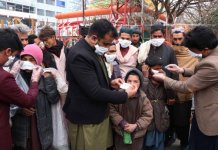In an appealing article, Gideon Rachman has explained that India is poorer than Africa and richer than Britain. To expose the stark picture of plenty and poverty, Rachman mentioned several examples perhaps already discussed in India’s social and economic forums. He mentioned that India has more mobile phones than toilets, has the largest number of poor and undernourished people than Africa. India’s space progarmmes and military expenditure were also picked by Rachman to deepen the contrasting of poverty.
Analysis like this definitely helps to avoid attrition in the continuation of the inclusion drives launched by the government. But if he was able to depict at least one successful measure like the NREGA, it would have acted as a much needed encouragement.
In a sporty manner, one can acknowledge that there is merit in Rachman’s expositions. It can be viewed as one of the several evaluations which should wake up and fasten the corrective measures domestically. India is indeed a changing scenario of a prospering country holding within a very large section of poor people
Rachman’s exercise is not the first one which highlighted the contrast within India. There are many institutions and organizations in the country which are working and implementing programmes supported and led by the government to overcome this backward situation. Rachman has not cared to mention at least one of them. Or he was not able to analyze the progress the country has achieved during the last decade with a fraction of the enthusiasm he has shown in illustrating the negatives.
India’s experience with misery and plenty simultaneously, is not unique to it. Detection and interpretation of the issue like that way is ignorance of history. Britain has a time in the pre-industrial period where crime and social unrest were high. The people, who gathered to see the execution of pick picketers, were pick- pocketed. Most of the criminals were exiled to new lands like Australia and South Africa. During that time, India was rich and built mega structures like the Taj Mahal.
One should simultaneously, acknowledge that situation in the country on human development front is changing gradually. Literacy rates are going up, infant mortality is coming down, compared to their high levels. The process of improvement is taking place. But this element was missed in Rachman’s article. The appeasement of the rich and the landlord was started with the British rule to raise revenue. The equality scenario of the country is far better now and government’s inclusion programmes will find its result one may hope. History also tells that pre colonial India was egalitarian than post industrial Western society. Of course India and Africa may not have the opportunity to muscle their domestic economies with exploitation of natural resources of the colonies.
Borrowing the words of Prime Minister Dr. Manmohan Singh, “The world is not kind to those who do not tackle their own problems.” Policymakers and political leadership in India should understand their role in sorting the country’s deep rooted development problems, highlighted by Rachman. Anyway, India can be hopeful in alleviating poverty, because it is growing now.
Simultaneously, Europe also has a big problem to sort out for its own i.e., maintaining the prosperity it has achieved with the help of exploiting the present day poor countries. Rachman can be equally analytical in providing a solution for the situation that Europe is not able to pay its salary bills. The prediction that ‘the world is not kind to those who do not tackle their own problems.’ is equally applicable to the west.










